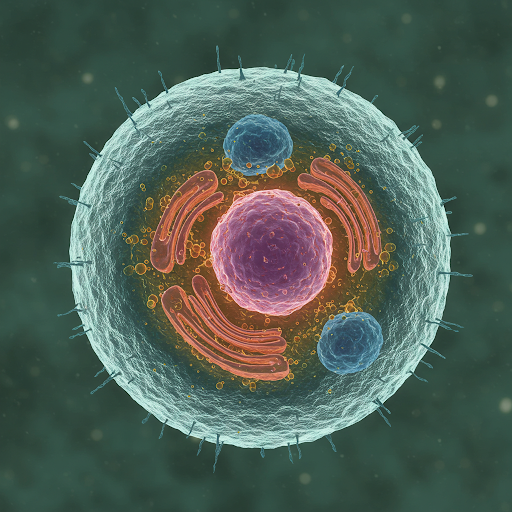For decades, accurate cell counting has served as a bedrock of cellular biology, hematology, oncology, immunology, and tissue engineering. Traditionally, hemocytometers paired with manual microscopy were the method of choice. However, this approach, while reliable, is inherently limited by subjectivity, labor intensity, and susceptibility to human error. The advent of automated cell counters introduced a paradigm shift—offering reproducibility, speed, and standardization. Among the leaders in this transition is Logos Biosystems, whose suite of automated counters has gained significant traction in both academic and industrial laboratories.
The Evolution of Automated Cell Counting
The early generations of automated counters focused on improving throughput while attempting to mimic the accuracy of manual counting. These instruments often utilized either electrical impedance (Coulter principle) or optical systems to detect and count cells. While successful, these methods presented limitations in differentiating live and dead cells, distinguishing between cell clumps, and quantifying irregular or non-spherical cell types.
Logos Biosystems has focused on addressing these limitations with a refined suite of image-based, fluorescence-capable cell counters. Their solutions—most notably the LUNA™ family—prioritize both precision and adaptability across diverse cell types and experimental conditions.
LUNA™: Image-Based Accuracy in a Compact Platform
Logos Biosystems’ flagship product line, the LUNA™ series, employs brightfield and fluorescence imaging to enhance detection specificity. Central to the system is the use of advanced optics and proprietary image analysis algorithms, enabling accurate discrimination between live and dead cells, debris, and clumps. For researchers accustomed to the visual confirmation offered by hemocytometers, the LUNA™ counters offer a familiar yet enhanced user experience by providing high-resolution images and annotated cell identification.
Particularly notable is the LUNA-FX7™, which offers a combination of high-throughput counting and robust fluorescence-based discrimination. Equipped with dual fluorescence channels and a high-resolution camera, the FX7 can distinguish between live/dead populations using stains like acridine orange and propidium iodide—an essential feature for immunologists and cell therapy developers who require precise viability data.
Reproducibility and Workflow Integration
A key advantage of the LUNA™ counters is their reproducibility. Traditional manual methods often introduce variability between users and across experiments. Logos’ automated algorithms eliminate operator bias, delivering consistency across runs. Furthermore, the software allows for standardized protocols, batch analysis, and integration with laboratory information management systems (LIMS)—all critical for high-throughput environments and regulated laboratories.
For GMP-compliant workflows, the LUNA-FX7 supports 21 CFR Part 11 features, including user authentication, audit trails, and electronic signatures—making it particularly appealing for biopharmaceutical QA/QC applications.
Application Versatility
Cell counting is rarely a monolithic task. Different cell types—adherent vs. suspension, mammalian vs. yeast, primary cells vs. engineered lines—demand nuanced handling. The LUNA™ platform accommodates this through interchangeable slide formats, customizable analysis parameters, and software modules designed for specific use cases.
In particular, the system’s ability to accurately quantify small or irregular cells (e.g., lymphocytes, stem cells, yeast) has made it a staple in immunology and microbiology labs. Additionally, the dual-mode fluorescence expands its utility in apoptosis studies, transfection efficiency assays, and CAR-T workflows.
Benchmarking Against Competing Platforms
While other automated systems such as the Countess™ II (Thermo Fisher) or NucleoCounter® NC-202™ (ChemoMetec) offer similar capabilities, Logos Biosystems’ competitive edge lies in its balance between cost-effectiveness, image quality, and software versatility. The compact footprint and intuitive interface lower the barrier for implementation without sacrificing performance.
In head-to-head comparisons, LUNA™ counters have demonstrated comparable or superior accuracy to manual hemocytometer counts, particularly in viability assays using trypan blue exclusion or AO/PI staining. Importantly, Logos has consistently invested in user-driven improvements, including cloud connectivity and automated quality control features.
Conclusion: From Subjective to Standardized
As the scientific community continues its shift toward reproducibility, automation, and data integrity, tools like the LUNA™ series from Logos Biosystems are not just luxuries—they are necessities. Automated image-based cell counting has matured into a reliable standard, and Logos continues to lead in this space through deliberate innovation and attention to practical laboratory needs.
For scientists who have spent decades perfecting the art of manual cell counting, the adoption of such systems may initially seem redundant or superfluous. Yet, the performance, consistency, and flexibility offered by platforms like the LUNA™ series provide a compelling rationale for modernization. In a discipline that demands precision, Logos Biosystems delivers.
